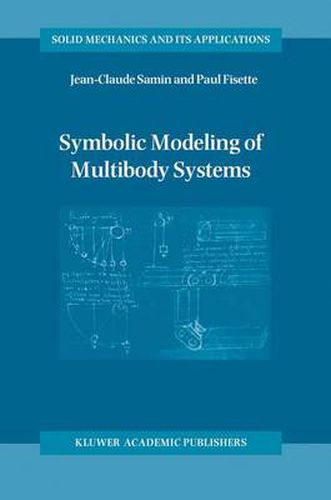Readings Newsletter
Become a Readings Member to make your shopping experience even easier.
Sign in or sign up for free!
You’re not far away from qualifying for FREE standard shipping within Australia
You’ve qualified for FREE standard shipping within Australia
The cart is loading…






This title is printed to order. This book may have been self-published. If so, we cannot guarantee the quality of the content. In the main most books will have gone through the editing process however some may not. We therefore suggest that you be aware of this before ordering this book. If in doubt check either the author or publisher’s details as we are unable to accept any returns unless they are faulty. Please contact us if you have any questions.
Modelling and analysing multibody systems require a comprehensive understanding of the kinematics and dynamics of rigid bodies. In this volume, the relevant fundamental principles are first reviewed in detail and illustrated in conformity with the multibody formalisms that follow. Whatever the kind of system (tree-like structures, closed-loop mechanisms, systems containing flexible beams or involving tire/ground contact, wheel/rail contact, etc), these multibody formalisms have a common feature in the proposed approach, viz, the symbolic generation of most of the ingredients needed to set up the model. The symbolic approach chosen, specially dedicated to multibody systems, affords various advantages: it leads to a simplification of the theoretical formulation of models, a considerable reduction in the size of generated equations and hence in resulting computing time, and also enhanced portability of the multibody models towards other specific environments. Moreover, the generation of multibody models as symbolic toolboxes proves to be an excellent pedagogical medium in teaching mechanics.
$9.00 standard shipping within Australia
FREE standard shipping within Australia for orders over $100.00
Express & International shipping calculated at checkout
This title is printed to order. This book may have been self-published. If so, we cannot guarantee the quality of the content. In the main most books will have gone through the editing process however some may not. We therefore suggest that you be aware of this before ordering this book. If in doubt check either the author or publisher’s details as we are unable to accept any returns unless they are faulty. Please contact us if you have any questions.
Modelling and analysing multibody systems require a comprehensive understanding of the kinematics and dynamics of rigid bodies. In this volume, the relevant fundamental principles are first reviewed in detail and illustrated in conformity with the multibody formalisms that follow. Whatever the kind of system (tree-like structures, closed-loop mechanisms, systems containing flexible beams or involving tire/ground contact, wheel/rail contact, etc), these multibody formalisms have a common feature in the proposed approach, viz, the symbolic generation of most of the ingredients needed to set up the model. The symbolic approach chosen, specially dedicated to multibody systems, affords various advantages: it leads to a simplification of the theoretical formulation of models, a considerable reduction in the size of generated equations and hence in resulting computing time, and also enhanced portability of the multibody models towards other specific environments. Moreover, the generation of multibody models as symbolic toolboxes proves to be an excellent pedagogical medium in teaching mechanics.